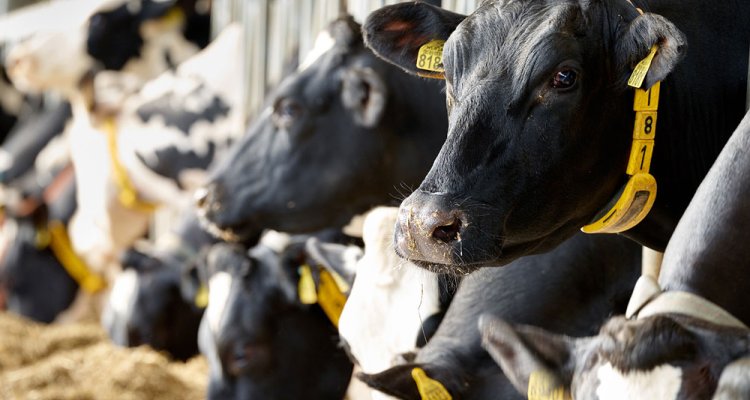
News
Genetics of enteric methane emissions of Dutch dairy cows
Breeding for lower emitting cows is possible as shown in our research where we collected data on 16 different farms in the Netherlands. This project was part of the Climate approach of the Ministry of Agriculture.
Reduction of enteric methane
The Dutch agricultural sector is facing the challenge to reduce the methane emissions by 2.1 Mton by 2030 (for dairy farming the reduction goal is 0.8Mton by 2030), and even further by 2050. As methane emission of dairy cows is a main challenge to reduce according to the Climate approach of the Dutch government, farmers urgently need efficient and cost-effective options to reduce methane emissions. Animal breeding that exploits natural animal variation in methane emissions is a mitigation strategy that is cost-effective, permanent, and cumulative. The aim of this study was to investigate the potential of animal breeding to reduce methane emissions.
Variation between cows
For breeding it is important that there is variation in methane emissions between cows and that the effect of environmental factors is separated from the genetic component by means of statistical models. To do so, measurements should be collected from a large number of cows as well as several measurements per cow. With the methane measurements, the heritability can be determined by making a link with the ancestry of the cow, based on pedigree and genotype (DNA) information. In this study, the heritability was determined of repeated sniffer measurements of 1,698 dairy cows, of which genotype information was also available. The results show that the heritability for methane emission is 23%, defined as the average emission per week. Compared to the heritability of full lactation milk production (40%) or most health and fertility traits (2% to 8%), the heritability of methane emission is moderate. A low or moderate heritability means that data from a larger number of cows must be collected to estimate reliable breeding values than when the heritability is high.
Impact of genetic differences
An indication of the difference that can be made by breeding can be represented by the genetic standard deviation. The genetic difference between the cows with the lowest and highest emissions was 474 ppm. This shows that by selecting cows and bulls with low emissions, a reduction in enteric methane emissions is a real possibility in the near future. This is all described in a new report of Wageningen University and Research.
What’s next?
This study has shown that breeding for lower emitting cows is a potential mitigation strategy. Therefore we are now setting up a large scale recording of individual cow’s emissions on 100 dairy farms in the Netherlands. This project is financed by Topsector Agri & Food, CRV and FrieslandCampina.